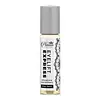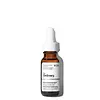What's inside
What's inside
 Key Ingredients
Key Ingredients

 Benefits
Benefits

 Concerns
Concerns

No concerns
 Ingredients Side-by-side
Ingredients Side-by-side

Water
Skin ConditioningGlycerin
HumectantButylene Glycol
HumectantLactobacillus Ferment Lysate Filtrate
Skin ConditioningCamellia Sinensis Leaf Extract
AntimicrobialPunica Granatum Extract
AstringentCaffeine
Skin ConditioningSodium Hyaluronate
HumectantHydroxypropyl Methylcellulose
Emulsion StabilisingPullulan
Porphyridium Cruentum Extract
Skin ConditioningAcetyl Tetrapeptide-5
HumectantPhenoxyethanol
PreservativeEthylhexylglycerin
Skin ConditioningSodium Citrate
BufferingWater, Glycerin, Butylene Glycol, Lactobacillus Ferment Lysate Filtrate, Camellia Sinensis Leaf Extract, Punica Granatum Extract, Caffeine, Sodium Hyaluronate, Hydroxypropyl Methylcellulose, Pullulan, Porphyridium Cruentum Extract, Acetyl Tetrapeptide-5, Phenoxyethanol, Ethylhexylglycerin, Sodium Citrate
Water
Skin ConditioningGlycerin
HumectantButylene Glycol
HumectantPropanediol
SolventDipropylene Glycol
HumectantAcetyl Glucosamine
Skin ConditioningNiacinamide
SmoothingPalmitoyl Tripeptide-38
Skin ConditioningAcetyl Tetrapeptide-5
HumectantMyristoyl Nonapeptide-3
Skin ConditioningDipeptide Diaminobutyroyl Benzylamide Diacetate
Skin ConditioningCaffeine
Skin ConditioningEpigallocatechin Gallatyl Glucoside
AntioxidantGallyl Glucoside
AntioxidantFraxinus Excelsior Bark Extract
Skin ConditioningSilanetriol
Arginine
MaskingPentylene Glycol
Skin ConditioningHydroxymethoxyphenyl Decanone
Skin ConditioningPropyl Gallate
AntioxidantMaltodextrin
AbsorbentHydroxypropyl Cyclodextrin
MaskingHydroxyethylcellulose
Emulsion StabilisingXanthan Gum
EmulsifyingCitric Acid
BufferingGlycolic Acid
BufferingSodium Citrate
BufferingPolysorbate 20
EmulsifyingTrisodium Ethylenediamine Disuccinate
Dehydroacetic Acid
PreservativeEthylhexylglycerin
Skin ConditioningBenzyl Alcohol
PerfumingPhenoxyethanol
PreservativeChlorphenesin
AntimicrobialWater, Glycerin, Butylene Glycol, Propanediol, Dipropylene Glycol, Acetyl Glucosamine, Niacinamide, Palmitoyl Tripeptide-38, Acetyl Tetrapeptide-5, Myristoyl Nonapeptide-3, Dipeptide Diaminobutyroyl Benzylamide Diacetate, Caffeine, Epigallocatechin Gallatyl Glucoside, Gallyl Glucoside, Fraxinus Excelsior Bark Extract, Silanetriol, Arginine, Pentylene Glycol, Hydroxymethoxyphenyl Decanone, Propyl Gallate, Maltodextrin, Hydroxypropyl Cyclodextrin, Hydroxyethylcellulose, Xanthan Gum, Citric Acid, Glycolic Acid, Sodium Citrate, Polysorbate 20, Trisodium Ethylenediamine Disuccinate, Dehydroacetic Acid, Ethylhexylglycerin, Benzyl Alcohol, Phenoxyethanol, Chlorphenesin
 Reviews
Reviews

Ingredients Explained
These ingredients are found in both products.
Ingredients higher up in an ingredient list are typically present in a larger amount.
Acetyl Tetrapeptide-5 is a peptide that goes by another name, eyeseryl, due to claims that it can help reduce eye puffiness.
The manufacturer claims this ingredient reduces eye puffiness by:
An in-vivo study from the manufacturer found 95% of volunteers saw eye bag improvement by the end of the study.
Eye puffiness is caused by two major factors: fluid retention and fat.
Those with fluid retention may see improvement from using this ingredient. However, those with eye fat will need surgical intervention in order to get rid of puffiness.
Learn more about Acetyl Tetrapeptide-5Butylene Glycol (or BG) is used within cosmetic products for a few different reasons:
Overall, Butylene Glycol is a safe and well-rounded ingredient that works well with other ingredients.
Though this ingredient works well with most skin types, some people with sensitive skin may experience a reaction such as allergic rashes, closed comedones, or itchiness.
Learn more about Butylene GlycolCaffeine is most associated with coffee, tea, and cacao. In skincare, it helps with calming inflammation and is rich in antioxidants.
While caffeine is used to treat cellulite and and dark circles, further studies are needed to prove this. It has been believed to help with these skin conditions due to its ability to dilate blood vessels and increase blood flow.
Some studies are looking into caffeine's ability to protect against UV rays.
Learn more about CaffeineEthylhexylglycerin (we can't pronounce this either) is commonly used as a preservative and skin softener. It is derived from glyceryl.
You might see Ethylhexylglycerin often paired with other preservatives such as phenoxyethanol. Ethylhexylglycerin has been found to increase the effectiveness of these other preservatives.
Glycerin is already naturally found in your skin. It helps moisturize and protect your skin.
A study from 2016 found glycerin to be more effective as a humectant than AHAs and hyaluronic acid.
As a humectant, it helps the skin stay hydrated by pulling moisture to your skin. The low molecular weight of glycerin allows it to pull moisture into the deeper layers of your skin.
Hydrated skin improves your skin barrier; Your skin barrier helps protect against irritants and bacteria.
Glycerin has also been found to have antimicrobial and antiviral properties. Due to these properties, glycerin is often used in wound and burn treatments.
In cosmetics, glycerin is usually derived from plants such as soybean or palm. However, it can also be sourced from animals, such as tallow or animal fat.
This ingredient is organic, colorless, odorless, and non-toxic.
Glycerin is the name for this ingredient in American English. British English uses Glycerol/Glycerine.
Learn more about GlycerinPhenoxyethanol is a preservative that has germicide, antimicrobial, and aromatic properties. Studies show that phenoxyethanol can prevent microbial growth. By itself, it has a scent that is similar to that of a rose.
It's often used in formulations along with Caprylyl Glycol to preserve the shelf life of products.
Sodium Citrate is the sodium salts of citric acid. In skincare, it is used to alter pH levels and acts as a preservative.
Its main functions are to maintain the pH of a product and neutralize metal ions.
The acidity of our skin is maintained by our glands and skin biome; normal pH level of skin is slightly acidic (~4.75-5.5).
Being slightly acidic allows our skin to create an "acid mantle". This acid mantle is a thin barrier that protects our skin from bacteria and contaminants.
Learn more about Sodium CitrateWater. It's the most common cosmetic ingredient of all. You'll usually see it at the top of ingredient lists, meaning that it makes up the largest part of the product.
So why is it so popular? Water most often acts as a solvent - this means that it helps dissolve other ingredients into the formulation.
You'll also recognize water as that liquid we all need to stay alive. If you see this, drink a glass of water. Stay hydrated!
Learn more about Water